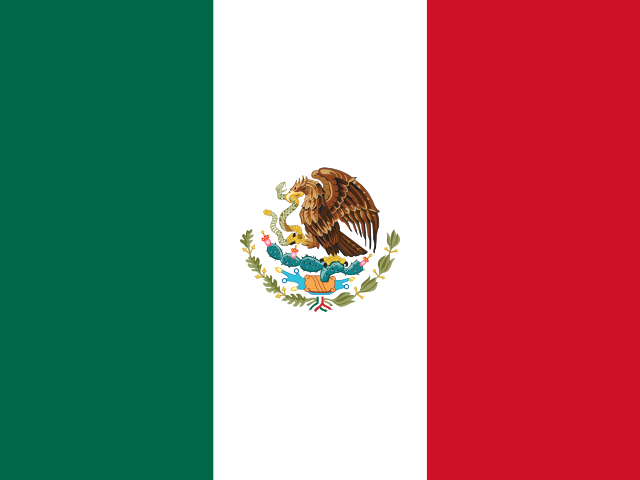
Mexico
Mexican president Claudia Sheinbaum came to power in June 2024 promising a change in the political climate but her large majority has raised fears about a concentration of power. Meanwhile, journalists’ working conditions remain among the most precarious and dangerous in the world.
The Mexican media landscape remains highly commercial and strongly focused on a few big players. TelevisaUnivision (merged in 2022) owns the most important broadcast outlets and recently reorganised its news division under the banner N+, part of a cross-platform strategy to reach younger and more digitally savvy audiences who increasingly consume news online and on mobile devices. At the same time the company has developed its streaming platform ViX, a hybrid service with some free channels and some subscription. The group has also strengthened 24-hour news coverage within the platform and staged its first regional transmission for Donald Trump’s inauguration in January, using anchors both from Mexican TV (Denise Maerker and Enrique Acevedo) and its US station Latino TV (Ilia Calderon). Streaming and broadcast audiences were reported to be around 20 million. A month later, the company announced a round of layoffs as it continues its digital transformation.
The Organización Editorial Mexicana (OEM) owns 70 regional newspapers (along with 24 radio stations and 44 websites). But El Universal, the oldest newspaper in the country, continues to be the most important – along with having the most visited online website. Its business model is a hybrid, combining print subscription with premium online content (El Universal Plus) and digital adverts. The Reforma newspaper also operates a premium paywall alongside its print subscription.
Other national newspapers including El Heraldo, Milenio, and Excelsior are diversifying with digital editions and ventures in TV and radio. La Jornada, supportive of the government, depends almost entirely on public advertising.
Claudia Sheinbaum, who is Mexico’s first female president, enjoys high public approval – she is credited as being the most-watched online news streamer in Mexico thanks to her popular daily press conferences which last for up to two hours. Though Sheinbaum has taken a more conciliatory approach to the media than her predecessor Andrés Manuel López Obrador, she kept a section every Wednesday dedicated to pointing out journalists who share so-called ‘fake news’. With a supermajority in Congress, her administration has been able to enact reforms which, among other things, have eliminated some independent institutions including the National Institute of Access to Information (INAI), the Federal Telecommunications Institute (IFT), and the Federal Economic Competition Commission (COFECE). It has also granted the government significant powers over the judiciary which has led to opposition claims of a growing autocracy. A new Transparency Act has led investigative journalists to fear for their future access to public information, a resource that has been vital in recent years for uncovering corruption.
Mexican journalists face widespread job insecurity and remain vulnerable to frequent attacks targeting their moral integrity and reputation. The NGO, Article 19, has also recorded four murders since the new president came to office, the most recent being Kristian Uriel Martínez Zavala, the founder of news website Silaoense MX, who was murdered in March in Guanajuato.1
Some international players have been gaining market share. El País México has set up a regional newsroom in the Mexican capital with some free content and some premium content behind a paywall. Infobae Mexico, a local version of the Argentinian digital news outlet, is growing in influence, while UnoTV news is credited with innovating by delivering free news updates via SMS to millions. Meanwhile the adoption of AI in Mexican media faces multiple barriers such as high implementation costs, lack of trust among editors and journalists, and limited technical training, but there is significant potential for both innovation and efficiency.2
The range of content offered by widely recognised journalists through podcasts has grown, for instance Así las cosas (That's the Way it is), hosted by sometime war correspondent and television host Carlos Loret de Mola, although podcasts are not yet people’s primary means of accessing news. Loret de Mola is also popular on YouTube, where he and other former legacy TV anchors and newspaper columnists are building personal audiences.
Another popular YouTuber, 22-year-old journalist, Manuel Pedrero, hosts an influential daily news commentary show called Sin Máscaras (Without Masks). He is known for his unfiltered and straightforward opinions though is also openly pro-government and is widely seen as receiving preferential treatment. Another show, Sin Embargo, is the most successful on YouTube from a small non-legacy media outlet, with 2.25 million subscribers. Its leading journalists, Alvaro Delgado and Alejandro Paez, have now become stars of legacy media at Canal Once, the most important public channel in the country.
María Elena Gutiérrez Rentería
Universidad Panamericana
Tania Montalvo
Reuters Institute for the Study of Journalism
Changing media
News consumption from print and television has become consistently less important over time for our online sample, with social media widely used across age groups. Mexicans are heavy users of social media, with TikTok (+6pp) growing fastest for news.
Pay for online news
14%
Trust in news overall
36%
(+1)
=27/48
President Andrés Manuel López Obrador's administration was characterised by constant and harsh criticism of the news media. The current president has taken a different approach, but this has not yet affected overall trust levels which remain low at 36%. The international news brand CNN and the oldest print media in Mexico, El Universal, are amongst those with the highest levels of trust.

